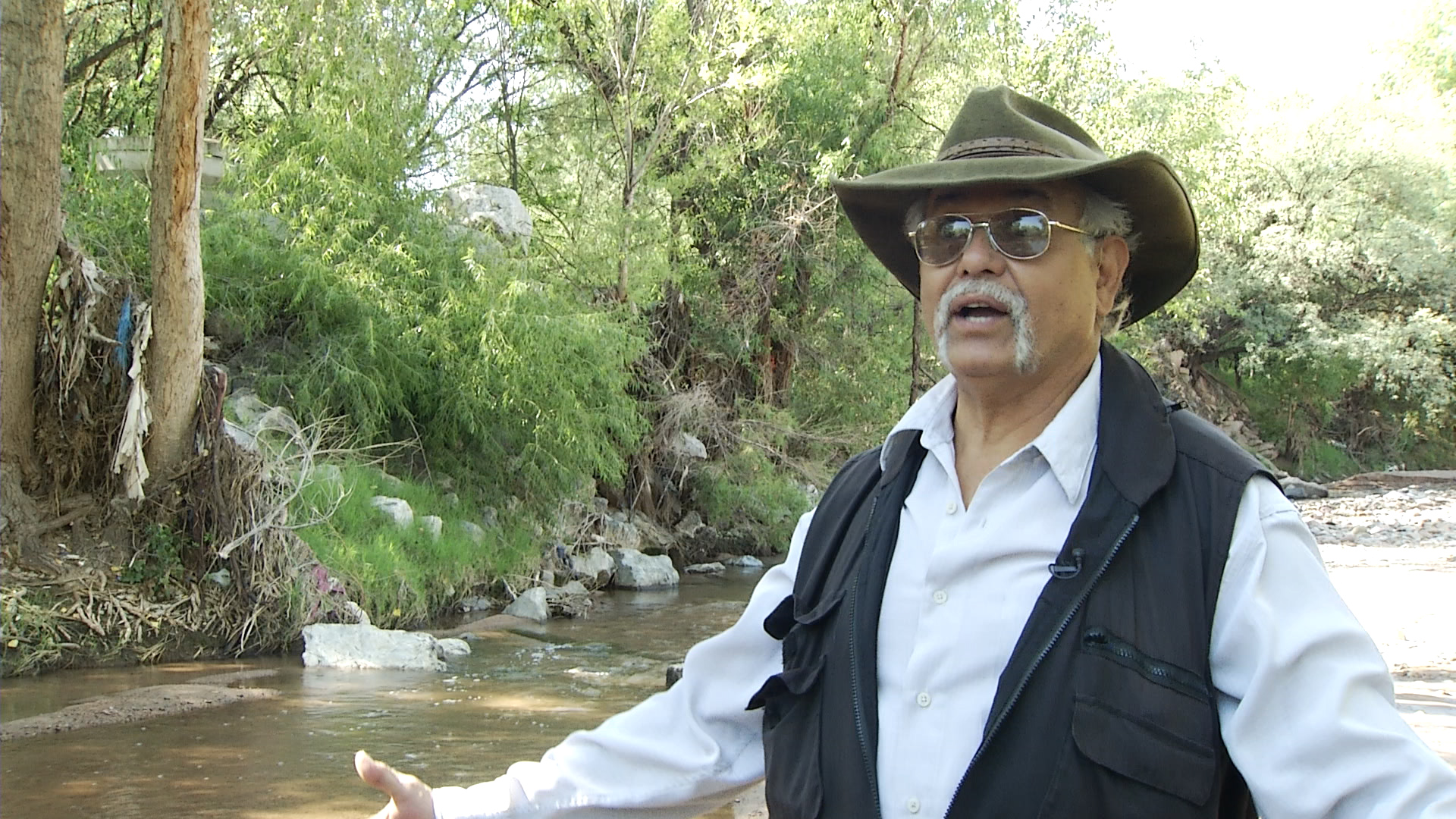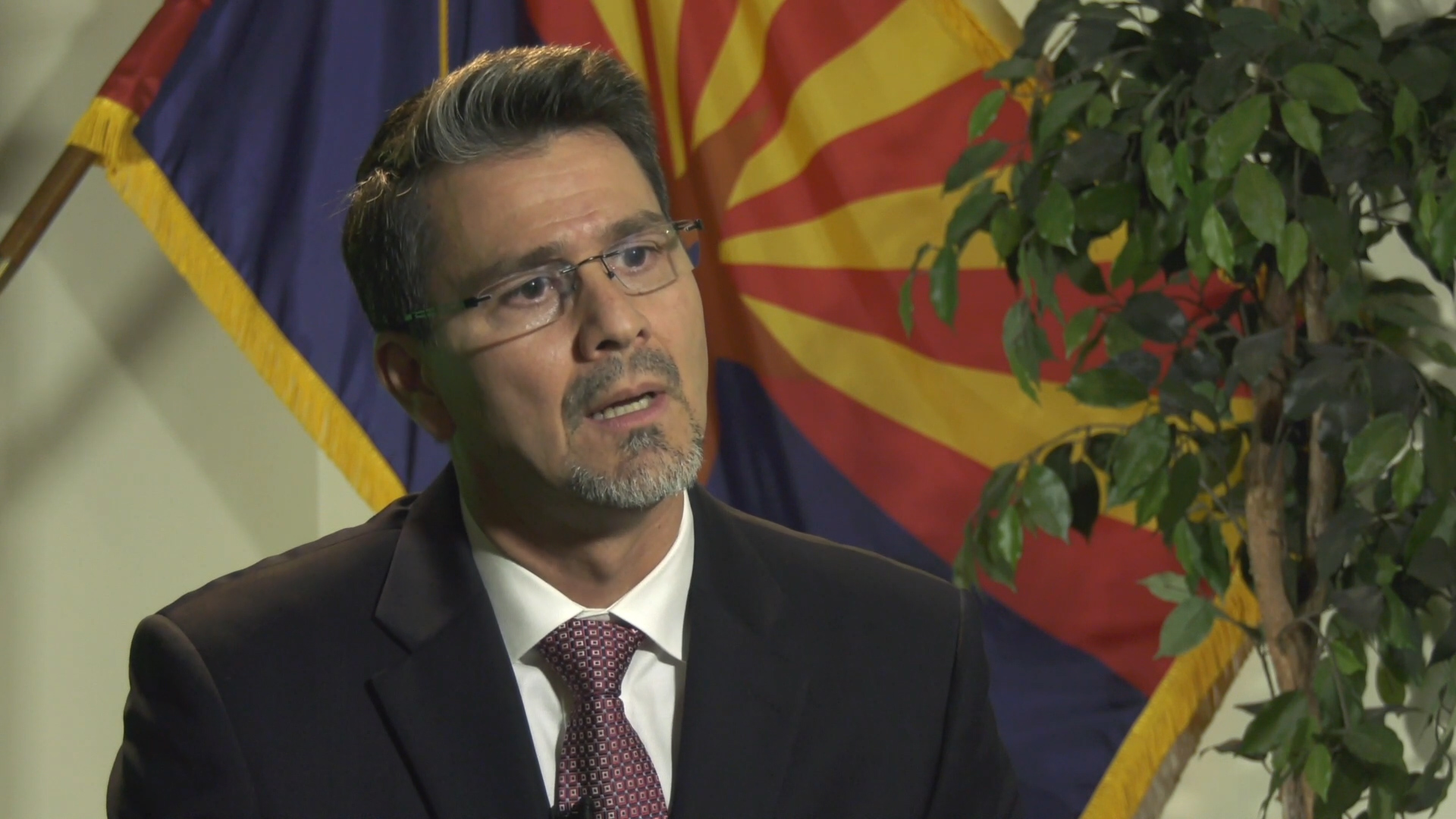 Nogales Wash in downtown Nogales, Arizona running bank to bank. (August 13, 2018)
Nogales Wash in downtown Nogales, Arizona running bank to bank. (August 13, 2018)
Recent heavy rains have caused city of Nogales engineers to fear there could be another pipeline break even bigger than last year. In 2017, Manhole 89 breached, sending millions of gallons of raw sewage into the Santa Cruz River.
Ben Lomeli is a hydrologist and a native of Santa Cruz County. He is a member of the environmental group called Friends of the Santa Cruz.
"The pipeline carries raw sewage from Nogales, Mexico — nine miles north to the Rio Rico treatment plant. Environmental groups have been warning agencies in the area that the pipeline is is old and rotting away from the inside. Last year it was Manhole 89, now we know that Manhole #86 is already leaking sewage."
 Hydrologists, Ben Lomeli stands near Manhole #86 in Nogales, Arizona. (August 13, 2018)
Hydrologists, Ben Lomeli stands near Manhole #86 in Nogales, Arizona. (August 13, 2018)
The pipeline is called the International Outfall Interceptor (IOI). It is now 25 years past its life expectancy and last year there was a major breach at Manhole 89, spewing millions of gallons of raw sewage into the Nogales Wash. The wash is a major tributary to the Santa Cruz River. After the breach last year, E. coli and heavy metals were found in the river all the way north to near the San Xavier Mission.
There is no debate that the pipeline must be replaced. The price tag is more than $80 million. And picking up that check is like a game of hot potato.
The federal government, through the International Boundary and Water Commission, wants the city of Nogales in Arizona and the state of Arizona to shoulder most of the cost.
Since 90 percent of the sewage is coming from Nogales, Mexico, a city with almost half a million people and only 10 percent from Nogales, Arizona, with less than 25,000 residents, John Kissinger is the deputy city Manager for Nogales, Arizona says what the federal government is asking is not fair.
“So how can we ask our rate payers to subsidize and to pay for the treatment of their sewage?
“We cannot enter into agreements with the country of Mexico. That responsibility and authority is only vested in the federal government."
The director of the Arizona Department of Environmental Quality, Misael Cabrera, agrees, and says Arizona is now suing the federal government over replacing the pipeline.
 Misael Cabrera is the Director of the Arizona Department of Environmental Quality (August 8, 2018)
Misael Cabrera is the Director of the Arizona Department of Environmental Quality (August 8, 2018) “The primary sticking block that we are at right now is that the federal government’s typical model is to build and install, but not to operate it.”
Nogales city officials say what is feasible is to get all those entities downstream of the treatment center who benefit the most from the international pipeline to share in the cost.
Bird watching has become big business in Arizona. The Audubon Society reports Arizona has a greater variety of birds than any U.S. state without an ocean coastline, and some of the rarest birds are found in Southern Arizona along that now vibrant Santa Cruz River.
- In 2016, Arizona Fish and Game reported $1.4 billion per year for the state attributed to bird watchers from around the world
- $300 million dollars per year in Pima County
- $24 million per year in Cochise County
- And $21 million dollars per year in Santa Cruz County
Areas like Patagonia, Sonoita, Rio Rico, Tumacacori, Carman, Tubac, Amado, Green Valley, Sahuarita. And that includes the Tucson area say Nogales city officials because a healthy Santa Cruz River has created green areas with cottonwood trees and willows that provide the perfect habitat for some of the best bird watching in the world.
The IOI pipeline and the upgraded treatment plant produce 14 million gallons a day that has brought new life and economic prosperity along the Santa Cruz River. But that is happening mostly downstream from Nogales.
City of Nogales, Arizona, elected officials say much wealthier communities downstream are benefiting the most from the now clean Santa Cruz River, but they should not be able to do it on the backs of people who, according to the latest Census Bureau report, who live in the third-poorest city in the state.

By submitting your comments, you hereby give AZPM the right to post your comments and potentially use them in any other form of media operated by this institution.